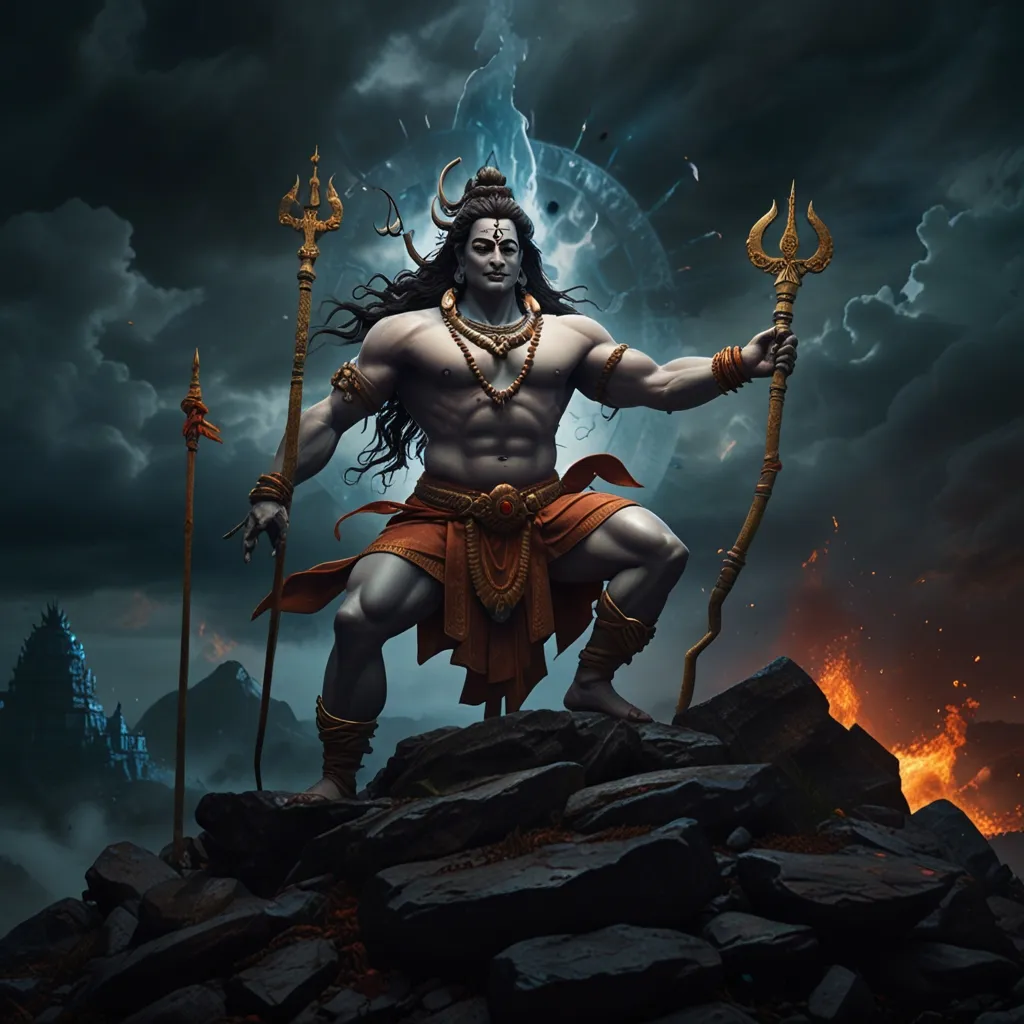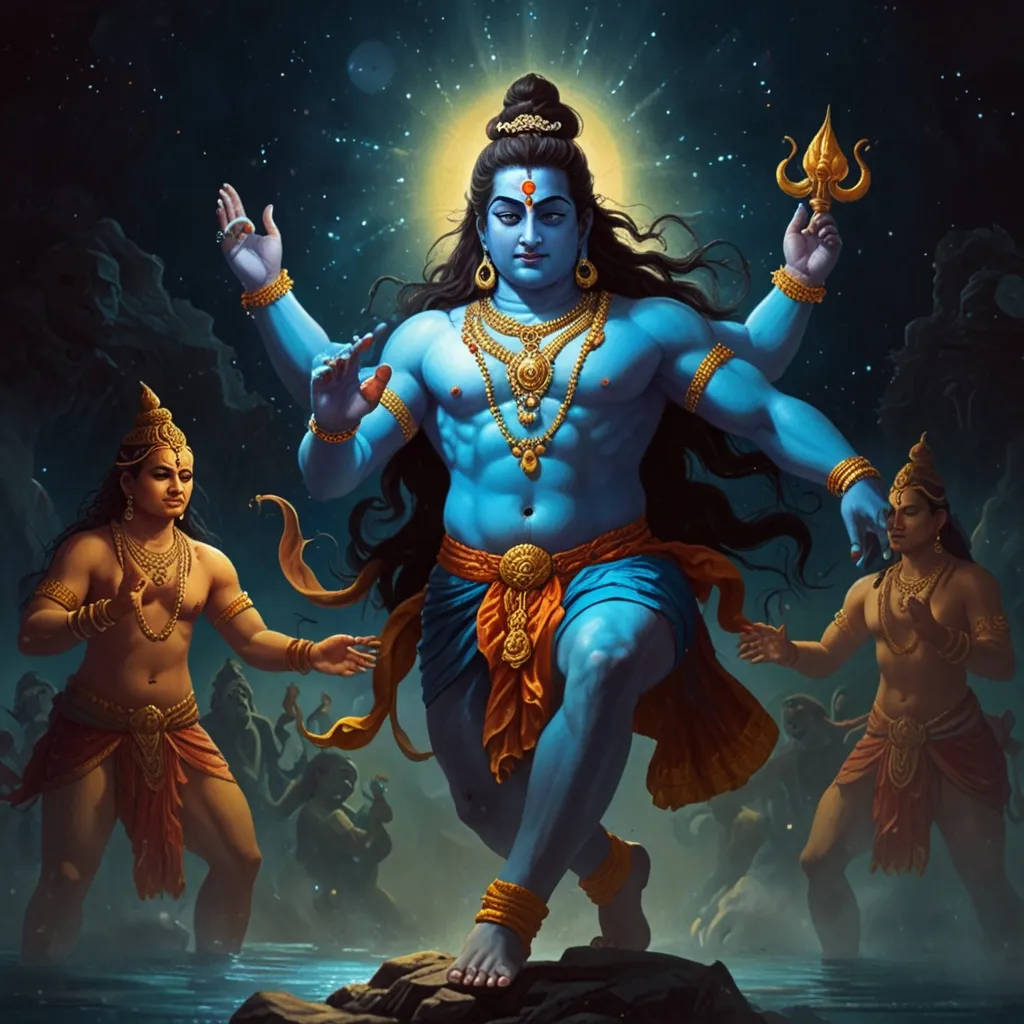In the sprawling landscape of Hindu mythology, there’s this fascinating story about Bhikshatana Shiva. It shows a unique side of Lord Shiva, as someone who can be both fierce and gentle, and conveys powerful lessons about humility and inner knowledge.
So, this form of Shiva, Bhikshatana, is a softer version of his fearsome aspect, Bhairava. Imagine Shiva, not as the usual strong and intimidating figure but as a strikingly handsome beggar. He’s naked and ithyphallic, meaning he has a prominent phallus. This form wasn’t just for show; it was a way for Shiva to go on a journey, both physically and spiritually, to teach a lesson to some oblivious sages who were too caught up in their intense austerities to see the bigger picture.
Shiva’s journey led him to the Deodar Forest, where he walked as this beggar, with his buddy Mohini, who was actually Vishnu disguised as a stunning woman. The goal was to snap the sages out of their ignorance, reminding them of the essence of true knowledge beyond just rituals and austerities.
As Shiva wandered in the forest, he started begging for alms from the wives of these sages. His appearance was so captivating that these women couldn’t help but be entranced. They let their clothes slip off as they followed him, engrossed in his charm, singing and dancing. Meanwhile, Mohini had her fun too, driving the sages’ sons mad with desire, adding more fuel to the fire.
The sages, oblivious to Shiva’s true identity, lashed out at him, cursing and assaulting him. They even cursed that his Linga (phallus) should drop off. Shiva, being the all-knowing deity, let this happen. His Linga fell and transformed into a blazing pillar of light, symbolizing his divine power and reminding the sages of their ignorance.
Amid this chaos, the wise Anusuya, wife of sage Atri, figured out who the beggar and his wife really were. She enlightened the sages, who then realized their mistake and were filled with remorse. They worshipped the Linga, begging for forgiveness. Moved by their sincere devotion, Shiva returned, but this time in a less appealing form with his wife Parvati. He eventually revealed his supreme self to the sages, promoting the Pashupata vow, which is all about living a life of celibacy and asceticism for ultimate salvation.
Shiva as a beggar isn’t confined to Bhikshatana’s legend alone. Shiva often roams the cosmos as a homeless ascetic. Parvati, his consort, pretty much exists to pull him back to their domestic life. This mix of fierce destroyer and gentle nurturer is a recurring theme about Shiva in Hindu mythology.
There’s another cool story where Shiva dons his beggar persona, this time seeking alms from the goddess Annapurna, a form of Parvati. This act isn’t just about satisfying hunger but symbolizes a deeper spiritual gesture reminiscent of Bhikshatana.
The whole idea of a wandering ascetic seems to have roots in the Kapalika sect, well before Bhikshatana’s tale hit the scene. The Kapalikas were known for their extreme rituals and lifestyle, much like Bhikshatana, who wanders with a trident, a skull-bowl, and worships Shiva. The Kurma Purana explicitly links Shiva with a Kapali, who is this outsider figure oscillating between terrifying and charming.
In atoning for Brahma’s fifth head severing, Shiva detached a part of himself, creating Bhairava, who roamed with Brahma’s skull in his hand. This mirrors the Pashupata vow pretty closely—a vow emphasizing celibacy and asceticism. A saint named Cuntarar described Bhikshatana in detail: with matted hair, ash-smeared skin, wearing bark and tiger skin, roaming for food by day, and dancing around a fire at night with Parvati and jackals.
Fast forward to more recent times, poet Papanasam Sivan penned some songs about Bhikshatana. In “Picchaikku Vandiro,” he ponders why Shiva roams as a beggar, suggesting it could be because Parvati’s asking for jewelry or his son, Ganesha wants sweets. Or maybe Shiva just wants to show he looks fabulous, even as a mendicant. Another song, “Saundarya Vellantanil,” narrates a maiden describing Bhikshatana’s beauty in a dreamy, love-struck way.
Bhikshatana’s tale is rich with spiritual and moral lessons. It teaches humility and the importance of recognizing true knowledge. Shiva’s journey shows us that real wisdom isn’t about appearances but about understanding one’s true nature. The story also portrays the duality of life—how even mighty gods need to atone and seek redemption.
At its core, Bhikshatana Shiva’s story is about more than atonement; it’s about uncovering profound truths of existence. It serves as a reminder that divine wisdom can be found in the most unexpected forms. This captivating narrative continues to inspire, offering deep insights into the complexities of Hindu mythology and revealing the many dimensions of Lord Shiva.






